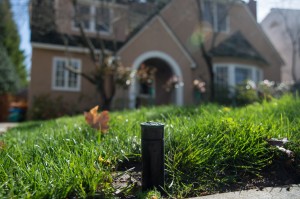Dawn White, Water Quality Manager for Golden State Water Company (GSWC) and chair of California Water Association’s Water Quality Committee, explained the unique role of the California Public Utilities Commission in water quality regulation to the attendees at the annual meeting of the National Conference of Regulatory Attorneys (NCRA), held in San Francisco on June 17, 2013. NCRA, consists primarily of attorneys who practice as consumer advocates, either as part of the CPUC or as an independent entity. NCRA meets annually to discuss a myriad of regulatory issues facing energy, water, telecommunications and rail/transportation utilities and companies.
Unlike government-owned water utilities in the public sector, which are exclusively regulated for drinking water quality by the California Department of Public Health’s (CDPH) Drinking Water Program, the state’s investor-owned water utilities are jointly regulated by CDPH and the CPUC for compliance with applicable drinking water quality standards. White drew on the judicial history of water quality regulation affecting CPUC-regulated water utilities to explain the importance of this shared jurisdictional regulatory responsibility.
Basically, the CPUC’s role in water quality regulation came to prominence with a 2002 California Supreme Court decision, Hartwell Corporation et al v. the Superior Court of Ventura County (27 Cal. 4th 256, February 4, 2002), in which the Court held that Public Utilities Code Section 1759 precluded superior courts from interfering with the CPUC in the performance of its official duties. In this case, plaintiffs had sued certain regulated water companies for damages alleging that the utilities had caused harm and personal bodily injury by providing unsafe drinking water, although the water utilities contended they had complied with all applicable water quality standards.
In its deliberations, the Court recognized that the CPUC had adopted General Order No. 103, which established uniform standards of water quality service for regulated utilities, including “…that ‘[a] ny utility serving water for human consumption or for domestic uses shall provide water that is wholesome, potable, in no way harmful or dangerous to health’…” The Court determined that the CPUC’s active regulatory role foreclosed an award of damages as long as the regulated utilities had complied with applicable water quality standards, based on the relevant, existing judicial test, specifically:
- “The Legislature has vested the [C]PUC with general and specific powers to ensure the health, safety, and availability of the public’s drinking water.”
- The [C]PUC has exercised and continues to exercise its jurisdiction to regulate drinking water quality.”
- “An award of damages on the theory that the public utilities provided unhealthy water, even if that water actually met DHS [now CDPH] and [C]PUC standards, would interfere with a ‘broad and continuing supervisory or regulatory program’ of the [C]PUC.”
This holding creates a “safe harbor” from tort liability if the utility has met CDPH standards. As noted by the Court, “DHS standards have been used by the [C]PUC in its regulatory proceedings for many years as an integral part of its broad and continuing program or policy of regulating water utilities. As part of that regulatory program, the [C]PUC has provided a safe harbor for public utilities if they comply with the DHS standards.” However, a toxic tort claim may still be shown if the water utility has not complied with a CPUC or CDPH water quality standard.
White went on to summarize the water quality provisions of General Order 103 (now G.O. 103- A) and to emphasize the compelling need for the CPUC to exercise its continuing jurisdiction in water quality in order for the Hartwell decision to remain in effect. White concluded her remarks with a preview of the coming California regulations on hexavalent chromium, 1,2,3-trichloropropane and nitrosamines, plus a review of how her own company, GSWC, successfully managed a water quality emergency that occurred in its Barstow District. Just before Thanksgiving 2010, it was discovered that the actions of an outside party led to perchlorate contamination that leeched into the groundwater and subsequently made its way into GSWC’s wells and distribution system.
Fortunately, GSWC was able to initiate its Emergency Operations Center immediately, including expeditiously notifying its customers, local officials and the general public; initiating “do not drink and boil water” notices through the media and reverse 911 calls; coordinating the remedial action with the CDPH; flushing its distribution system of the contaminated water; and lifting the public notices on November 24, 2010. The utility was commended by CDPH and local officials in Barstow and San Bernardino County for its timely response to the emergency.





